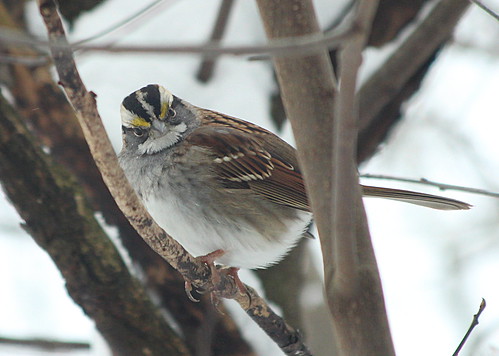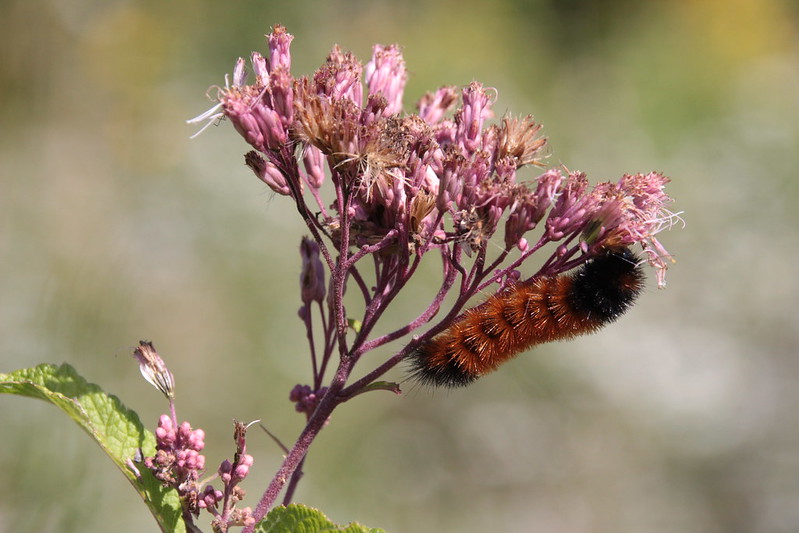My wife and I went for a hike this past weekend and, as soon as we got out of the car, we turned to each other and said “It smells like fall.” It’s hard to describe it, that musty sweet smell of leaves as they start to break down and decompose, but it fills the air in October.
Autumns smells trigger memories for me in ways that the muddy smell of spring and the crisp, nose-pinching smells of winter do not. Fall is the smell of riding in a trailer of fresh-raked leaves behind the tractor. We raked the leaves each year to plow under and help grow rows of beans, peas, tomatoes and onions. As kids, our job was to pile in on top of the wagon so the leaves wouldn’t blow away as they were taken to the garden.
Raking leaves was hard work, but there were always things to see as we raked. Large kettles of hawks flew overhead. Boiling masses of hawks circled in groups of several hundred and were flying south for the winter. They flew so high that all we could see were balls of circling dots dancing in an aerial ballet that has happened for time immemorial.

Fall is full of other animals too. Everyone notices the Woolly Bear caterpillar as it wanders through field, forest and yard, looking for a place to spend the winter. Most people have a story about how it predicts the length of the coming winter, though biologists now know the Woolly Bear puts on more brown as it gets older.
It’s fascinating to me how many people look to Woolly Bears to predict the winter. In some ways, I find it weird that people expect an insect to predict the future. At the same time, this feels like a tradition that gets people to tune into nature and look at something beyond their phones.
In college, one professor described the process of raking leaves as removing nutrients from the yard and shipping them somewhere else. Trees pull nutrients from deep in the earth and turn them into leaves, which they then drop to fertilize the soil at their feet. My professor was teaching a basic scientific principle, that pulling the nutrients off of an area each year made poorer soil over time.
I took that lesson home and told my dad about it as a college kid filled with the confidence of new knowledge. We ended up having a long discussion about how we used the nutrients in the leaves to grow food, but that if everyone left their leaves their yards would look horrible. He didn’t think that would go over well.

The more I have learned about nature, the more it has affected the basics of how I care for my yard. I don’t deadhead the flowers anymore, because the goldfinches and other birds visit them for their seeds. Milkweed is left standing for the winter so that the Baltimore Oriole three backyards away can come and pull strands of thread from them next spring for their nests. Leaves are raked onto gardens and flower beds, just as they were when I was a kid. These leaves also provide places for firefly larva and other amazing insects to spend the winter.
It has been a huge switch in mindset to go from thinking of a yard as a place to relax to thinking of a yard as part of the greater habitat around me. Some plants in the yard are beautiful or tasty for me and my family. Others serve as important food sources for insects and other animals.
My yard provides essential food and shelter for migrating birds. They stop for natural seeds and berries as much as the seeds in the birdfeeder. Warblers, tiny birds that migrate south in the fall, fill my yard with flittering, fluttering confusion as I try to make out the dull patterns of their fall feathers. These little birds mostly avoid the birdfeeder and flit amongst the native plants, peaking under leaves and along branches for insect treats to fuel their journey further south.
Flipping my thinking from “my yard” to “essential part of a local habitat” wasn’t easy. It required looking at my yard from the point of view of the non-human inhabitants of it. There is still room to throw a Frisbee or jump on a trampoline, but there is also space for the animals that live or stop there as a part of their lives.
Fall is one of the best times to see that happening. The leaves change color and fall, revealing the hidden nests in the trees. Migrating birds stop by to rest and feed. Summer birds leave and winter birds arrive.
The smell of fall brings back those childhood memories of riding in a wagon full of leaves. It also reminds me of the challenges of creating a living space for the animals in my yard while revealing what animals have lived there all year long.
Audubon Community Nature Center builds and nurtures connections between people and nature. ACNC is located just east of Route 62 between Warren and Jamestown. The trails are still open from dawn to dusk as is Liberty, the Bald Eagle. The Nature Center is partially open, including restrooms, the Blue Heron Gift Shop, and some exhibits. More information can be found online at auduboncnc.org or by calling (716) 569-2345.


Recent Comments